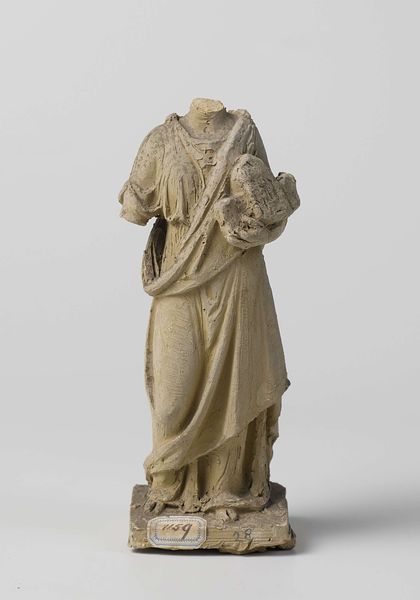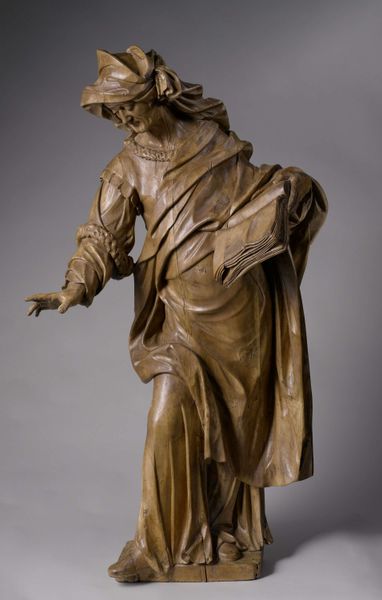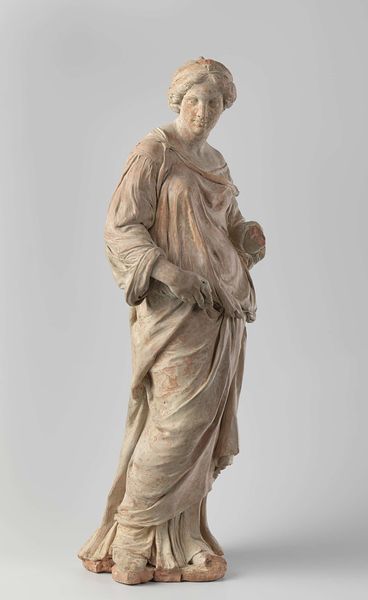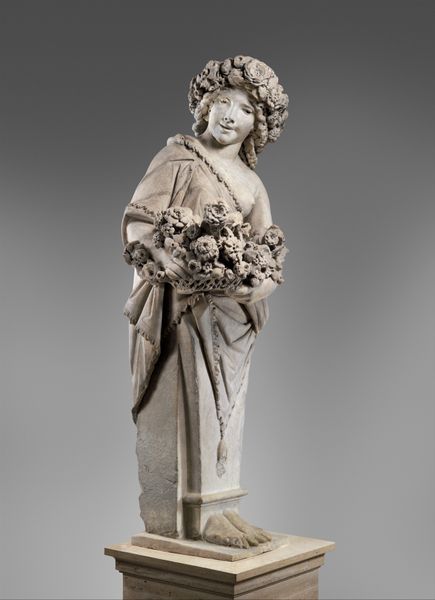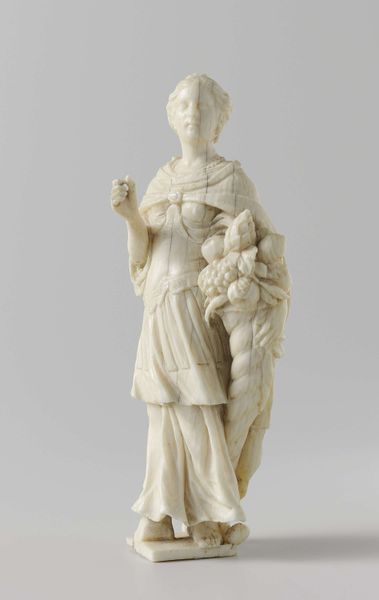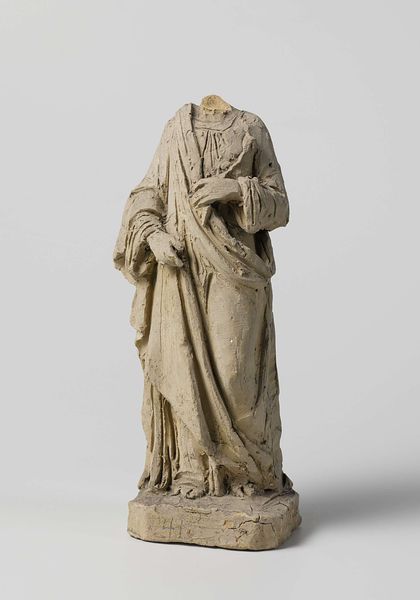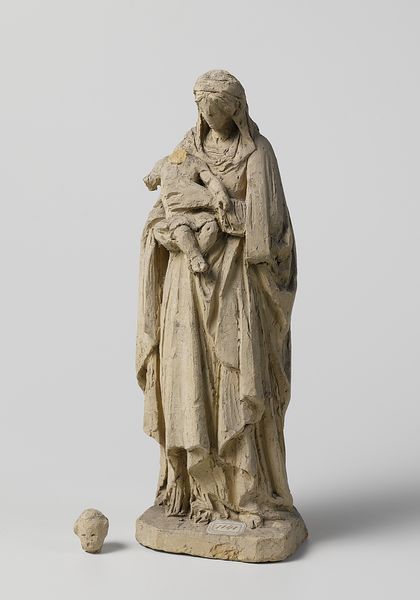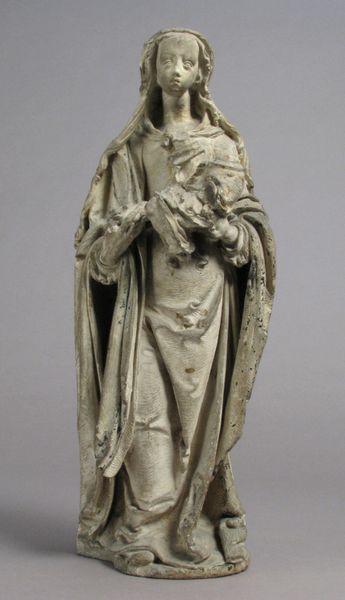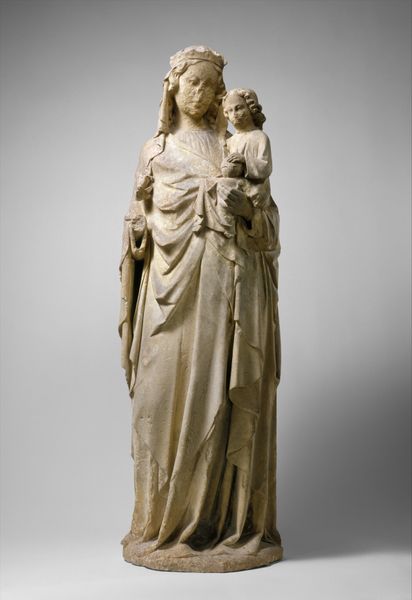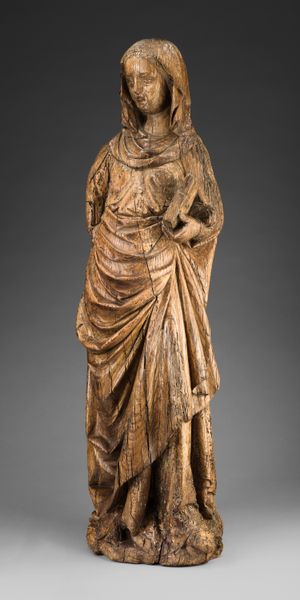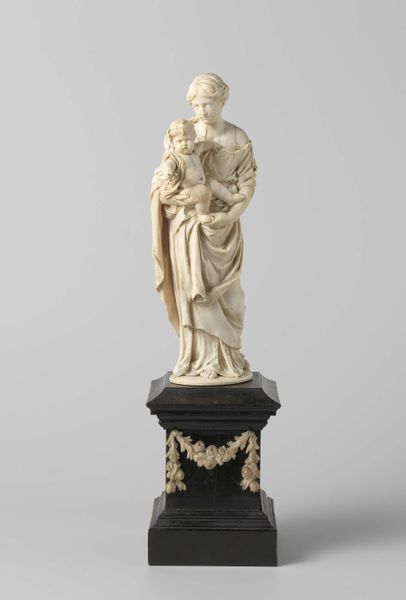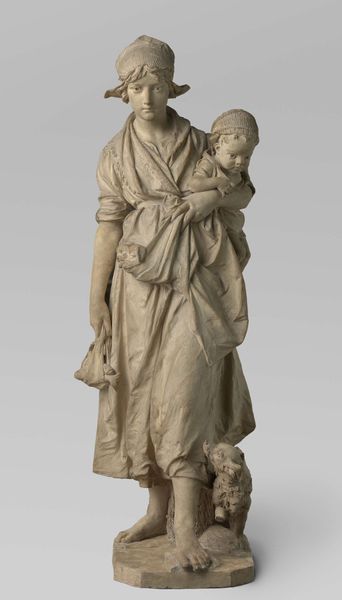
sculpture, marble
#
portrait
#
baroque
#
sculpture
#
figuration
#
sculpture
#
history-painting
#
marble
Copyright: Rijks Museum: Open Domain
Artus Quellinus, made this earthenware sculpture, “Wisdom,” sometime in the 17th century. Quellinus, a Flemish sculptor, worked during the Baroque period, a time marked by dramatic, ornate art often commissioned by the Catholic Church and European aristocracy. Looking at "Wisdom", one can see how it embodies aspects of classical antiquity and also conveys the cultural values of its time. The sculpture portrays a female figure draped in classical robes, a symbol of knowledge and virtue. The snake coiled around her arm is a symbol of medicine and healing, but also alludes to temptation and knowledge. This figure encapsulates the complex ways that women were viewed during this period. She had to represent virtue and be associated with knowledge, but also had to embody traditional ideals and moral expectations of women at the time. The work reflects the power dynamics and gendered expectations prevalent during the Baroque era. It invites us to reflect on how societal ideals are embodied in art and the ongoing struggle for equality and representation.
Comments
rijksmuseum about 2 years ago
⋮
Both façades of the Town Hall are surmounted by three bronze statues. On the front elevation, Peace is flanked by the virtues Wisdom and Justice, of which these terracotta figures are the scale models. On the rear elevation, Atlas shoulders the celestial globe, with Temperance and Vigilance at his side. The message expressed here is that universal peace, on earth and in heaven, depends on these four virtues.
Join the conversation
Join millions of artists and users on Artera today and experience the ultimate creative platform.
